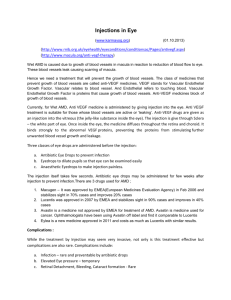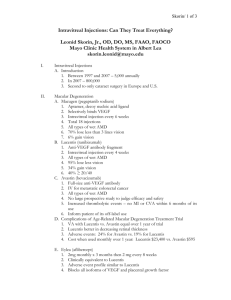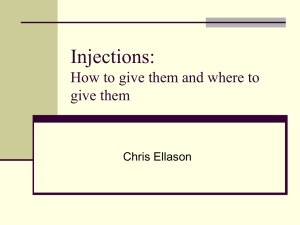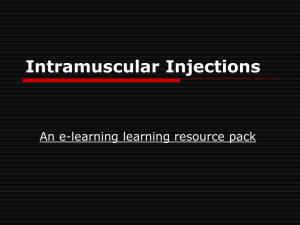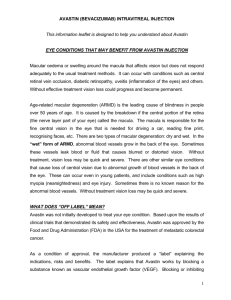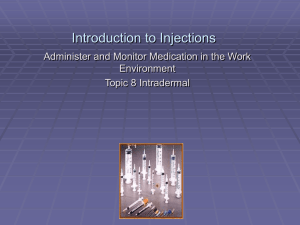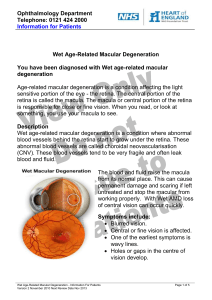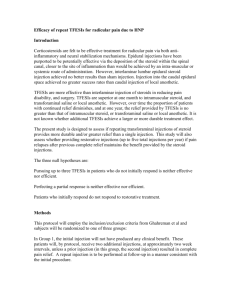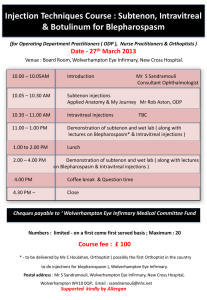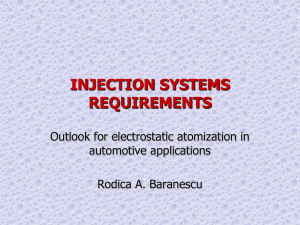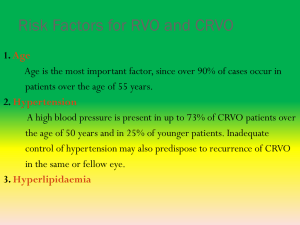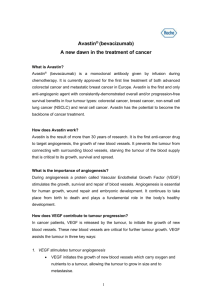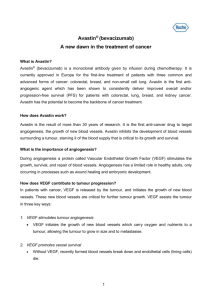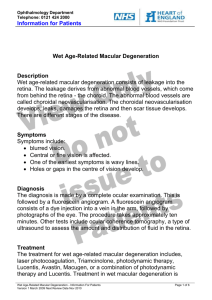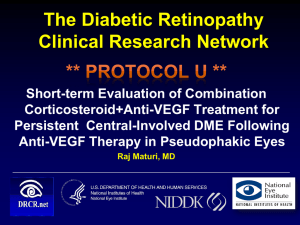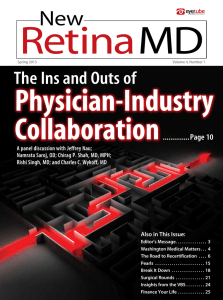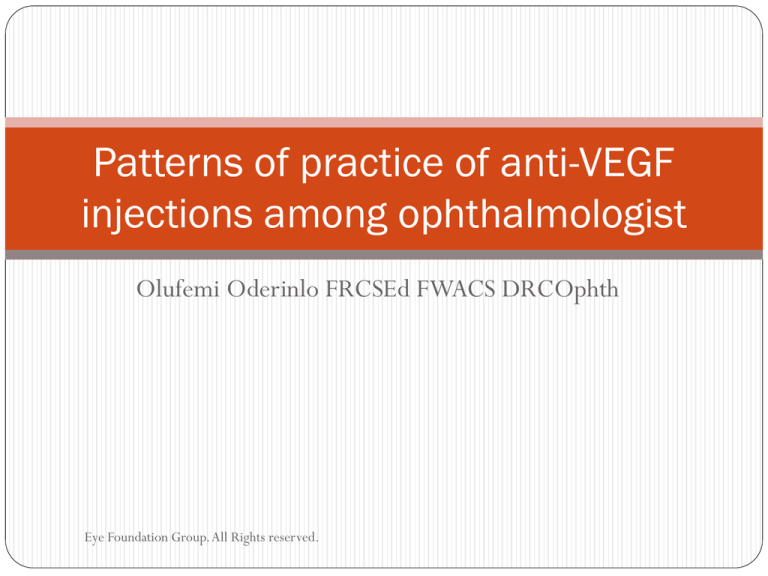
Patterns of practice of anti-VEGF
injections among ophthalmologist
Olufemi Oderinlo FRCSEd FWACS DRCOphth
Eye Foundation Group. All Rights reserved.
INTRODUCTION
Anti-VEGF injections have changed the face of both medical and
surgical retina practice world wide.
These agents are being used for many eye diseases, especially for
wet form of AMD (Age related Macular Degeneration), CNVM
(Choroidal Neo Vascular Membrane), Severe Diabetic
Retinopathy, Macular Edema (swelling), Vascular Blocks,
Neovascular Glaucoma (NVG), Vitreous Hemorrhage, etc.
These retinal diseases, which were earlier considered incurable, or
had very poor results with existing treatments are now being
tackled with good results with anti-VEGF agents.
Eye Foundation Group. All Rights reserved.
The anti-VEGF agents block the VEGF molecules and thus benefit the
patients by decreasing the abnormal and harmful new blood vessels
formation and by decreasing the leakage and swelling of the retina. This
leads to stabilization of vision and even improvement in vision in many
cases.
As of now, there are four injections available with us for treatment.
These are Lucentis, Avastin and Macugen. Afibercept has just recently
been added to the list.
These injections are given intravitreally. The procedure is a very small
one, usually performed inside the operation theatre to maintain strict
asepsis. The patient is discharged within 10-15 minutes of the procedure,
and can resume his/her normal activities immediately.
Eye Foundation Group. All Rights reserved.
AIM
1 To report the prevalent patterns of practice of antivegf
injections among ophthalmologist attending world
ophthalmology congress 2012 retina sessions
2 To report variations in the patterns of practice for injection
of antivegf injections among ophthalmologists practicing in
different regions of the world.
Eye Foundation Group. All Rights reserved.
MATERIALS AND METHODS
A questionnaire survey was done among ophthalmologist
attending retina sessions during the World Ophthalmology
Conference in Abu Dhabi from Febuary 15th to 20th 2012.
Eye Foundation Group. All Rights reserved.
RESULTS
A total of 94
Ophthalmologist
responded to the survey.
14 (14.9%) females and
80 (84.1%) males
60%
50%
40%
30%
55%
20%
31%
10%
10%
0%
2%
21 - 30
years
Eye Foundation Group. All Rights reserved.
2%
31- 40
years
41 - 50
years
51 - 60
years
Above 60
years
TYPE OF INSTITUITION
60%
60%
50%
40%
34%
30%
20%
6%
10%
0%
Private
Eye Foundation Group. All Rights reserved.
Government Owned
Others
LEVEL OF PRACTICE
90%
87%
80%
70%
60%
50%
40%
30%
20%
9%
4%
10%
0%
Consultant Opthamologist
Eye Foundation Group. All Rights reserved.
Opthamologist in training
Others
LOCATION OF PRACTICE
Others
15%
Oceania
2%
North America
2%
Europe
10%
Africa
12%
Asia
60%
0%
10%
20%
Eye Foundation Group. All Rights reserved.
30%
40%
50%
60%
70%
Which AntiVEGF agent do you use most
often. Lucentis (Ranibizumab) or
Avastin (Bevacizumab)
80%
70%
60%
50%
79%
40%
30%
20%
21%
10%
0%
Lucentis (Ranibizumab)
Eye Foundation Group. All Rights reserved.
Avastin (Bevacizumab)
Which disease processes do you treat
more commonly with antivegf agents :
Others
11%
Central serous choriorretinopathy
16%
Rubeotic glaucoma
39%
Neovascular retina vein occlusions
52%
Proliferative sickle cell retinopathy
14%
Exudative age related macula degeneration
76%
Proliferative diabetic retinopathy
70%
Macula oedema
83%
0%
10%
Eye Foundation Group. All Rights reserved.
20%
30%
40%
50%
60%
70%
80%
90%
Which injection protocol do you follow
mostly for Avastin
60%
55%
50%
40%
30%
30%
20%
10%
7%
7%
0%
Monthly for 2 years
Monthly for 3 months then
PRN
Eye Foundation Group. All Rights reserved.
PRN (Only when medicated)
Not specified
What dose of avastin do you use
routinely per injection
90%
80%
70%
60%
50%
85%
40%
30%
20%
10%
7%
7%
0%
1.25 mg
Eye Foundation Group. All Rights reserved.
2.50 mg
Others
What dose of lucentis do you use
routinely per injection
45%
40%
35%
30%
25%
42%
20%
28%
15%
23%
10%
7%
5%
0%
3 mg
5 mg
Eye Foundation Group. All Rights reserved.
Others
Not specified
Preferred form of anaesthesia
78%
80%
70%
60%
50%
40%
30%
20%
6%
7%
Subtenon
Retrobular
10%
9%
0%
Topical
Eye Foundation Group. All Rights reserved.
Others
Preferred location of giving injection
42%
45%
40%
35%
35%
30%
25%
19%
20%
15%
10%
4%
5%
0%
Office
Side theater
Eye Foundation Group. All Rights reserved.
Main theater
None mentioned
Preferred site of injection
60%
54%
50%
40%
34%
30%
20%
10%
6%
3%
1%
0%
Superotemporal
Inferotemporal
Eye Foundation Group. All Rights reserved.
Superonasal
Inferonasal
None mentioned
Relationship between anti vegf used
and type of instituition
100%
100%
90%
82%
80%
69%
70%
60%
Lucentis
Avastin
50%
40%
31%
30%
18%
20%
10%
0%
0%
Private
Eye Foundation Group. All Rights reserved.
Government owned
Others
Relationship between anti vegf used
and location of practice
100%
100%
100%
89%
86%
90%
79%
80%
73%
70%
60%
Lucentis
50%
Avastin
40%
27%
30%
21%
20%
14%
11%
10%
0%
0%
0%
Asia
Africa
Eye Foundation Group. All Rights reserved.
Europe
North America
Oceania
others
DISCUSSION
Lucentis is approved for ,Macula oedema : diabetic, CRVO,
BRVO, Exudative ARMD,CNVM from pathologic myopia.
Approval is a guide for antivegf use macula oedema, PDR and
ARMD are all indications for more than 75% of respondents.
Monthly for 3 months then prn was the preferred regime of
injection in 55%.The PIER study popularized this regimme
unlike ANCHOR ,MARINA that used monthly injections for
24 months.
30% responded PRN alone, the need to taylor treatment to
disease process is very important.
Eye Foundation Group. All Rights reserved.
ANAESTHESIA
78% of respondents use topical anaesthesia.
A recent randomised study actually concluded that Topical
anaesthesia was safe and effective for intravitreal injections
The average combined pain scores for both the anesthesia and
the intravitreal injection were 4.4 for the lidocaine pledget,
3.5 for topical proparacaine, 3.8 for the subconjunctival
lidocaine injection, and 4.1 for topical tetracaine. The
differences were not significant (P = 0.65). There were also
no statistical differences in the individual anesthesia or
injection pain scores for each of the groups.
Subconjunctival lidocaine injection had the most side effects
Eye Foundation Group. All Rights reserved.
INJECTION SITE
4% superotemporal, 34% inferotemporal
Pharmacologic evidence show that the superior
retina/choroid area near the site of the injection, tended to
have higher concentration .
Non of the Large series RCTs implicated location of injection
as a cause of endophthalmitis , safety convinience and sterility
are main issues
Eye Foundation Group. All Rights reserved.
DOSE
In all major RCTs, there was no significant difference in both
doses of lucentis and avastin
85% of avastin users used 1.25mg most likely for safety
concerns
Eye Foundation Group. All Rights reserved.
Eye Foundation Group. All Rights reserved.
Avastin was the preferred anti vegf used despite level and
location of practice or type of instituition. 79% responded
they use avastin more than lucentis
Despite clinical concerns and pharmacology, avastin is still
the most widely used anti-vegf
WHY ?
Cost ? Availability?
Eye Foundation Group. All Rights reserved.
What effect will afibercept have on this equation. ?
Eye Foundation Group. All Rights reserved.
CONCLUSION
Anti vegf injections are more commonly given for macula
oedema and exudative age related macula degeneration .
Most ophthalmologist prefer to give injections monthly for 3
months and then prn.
Topical anaesthesia was preferred and the superotemporal
quadrant was the most common injection site .
Avastin was the preferred anti vegf used despite level and
location of practice or type of instituition.
Eye Foundation Group. All Rights reserved.
THANK YOU
Eye Foundation Group. All Rights reserved.
REFERENCES
Blaha GR, Tilton EP, Barouch FC, Marx JL.Randomized
trial of anesthetic methods for intravitreal injections. Retina.
2011 Mar;31(3):535-9.
2. Kim SJ, Toma HS. Ophthalmic antibiotics and
antimicrobial resistance a randomized, controlled study of
patients undergoing intravitreal injections.Ophthalmology.
2011 Jul;118(7):1358-63. Epub 2011 Mar 21.
3. Intravitreal Injections, Focal Points, Volume XXVII,
Number 8, September 2009
Eye Foundation Group. All Rights reserved.
REFERENCE
Yoko Miura, Masafumi Uematsu, Mugen Teshima, Kiyoshi Suzuma,
Takeshi Kumagami, Hitoshi Sasaki, and Takashi Kitaoka.
Injection Site and Pharmacokinetics After Intravitreal
Injection of Immunoglobulin Journal of Ocular
Pharmacology and Therapeutics. February 2011, 27(1): 35-41
Ferrone PJ, Gray S, Saroj N, Singh A. Endophthalmitis rate and
utility of postinjection telephone contact and clinical examination
in detecting endophthalmitis after ranibizumab injection.
Presented at: Annual Meeting of the American Society of Retina
Specialists; December 1-5, 2007; Palm Springs, CA.
Jager RD, Aiello LP, Patel SC, Cunningham ET Jr. Risks of
intravitreous injection: a comprehensive review. Retina.
2004;24:676-698.
Eye Foundation Group. All Rights reserved.

